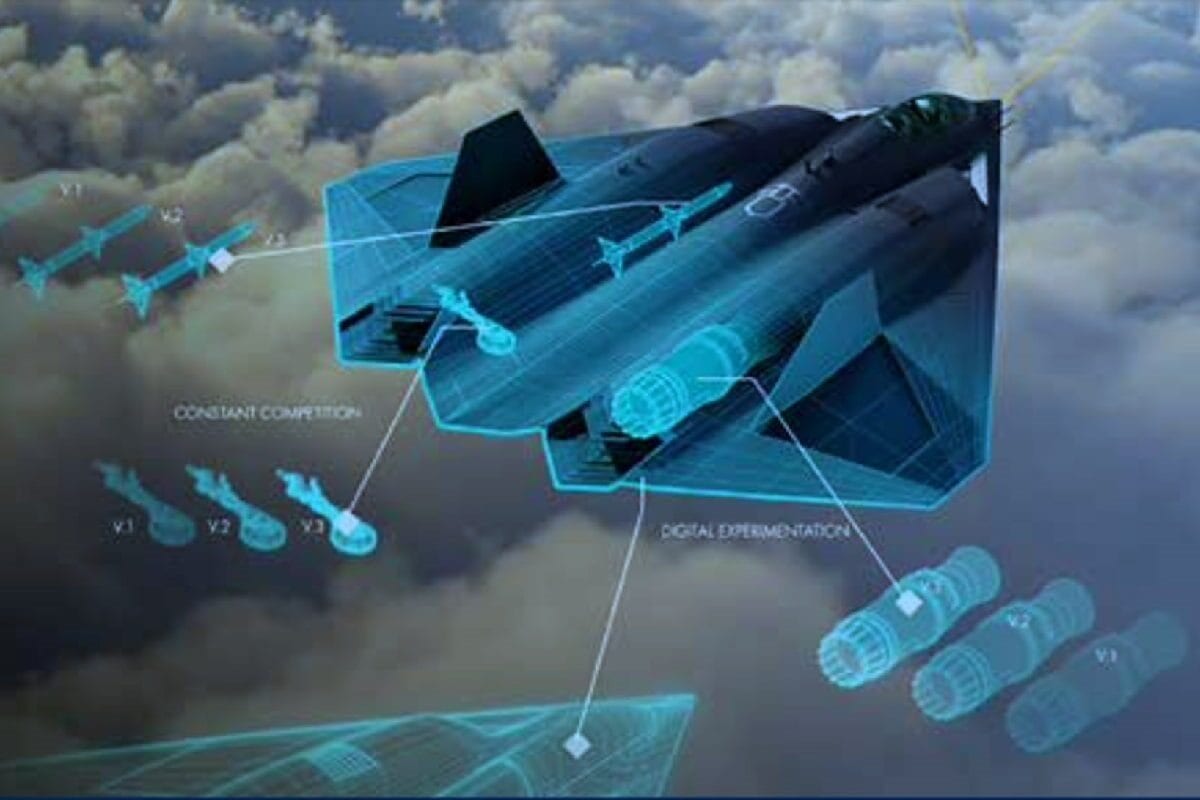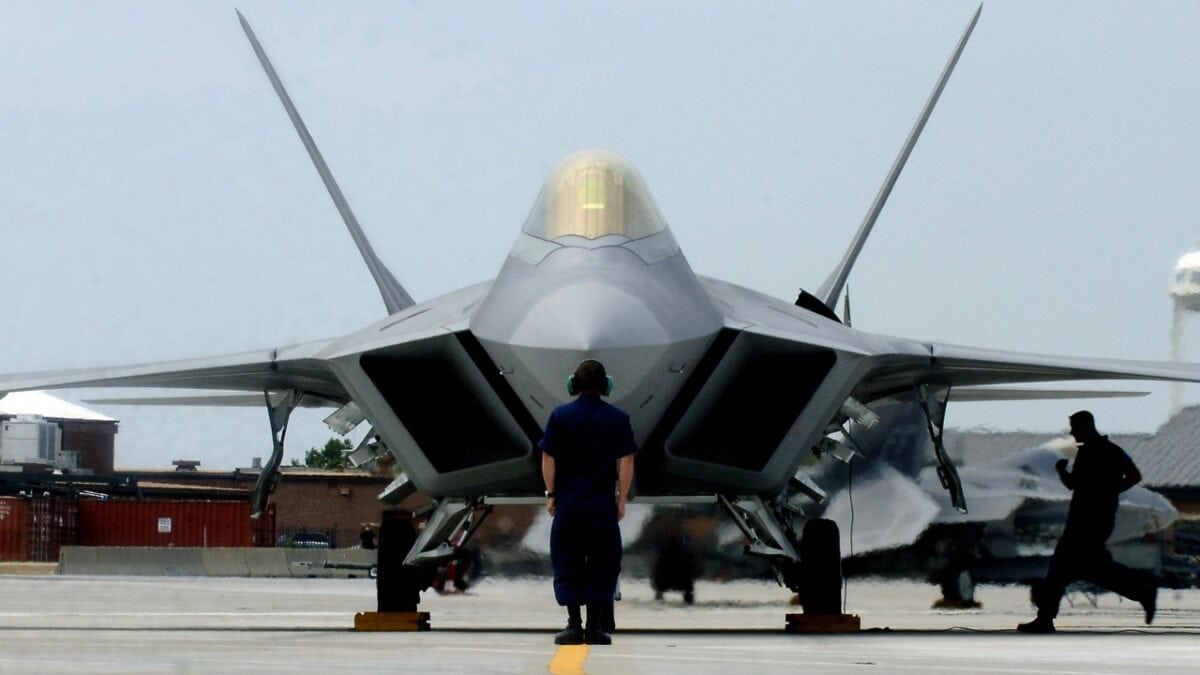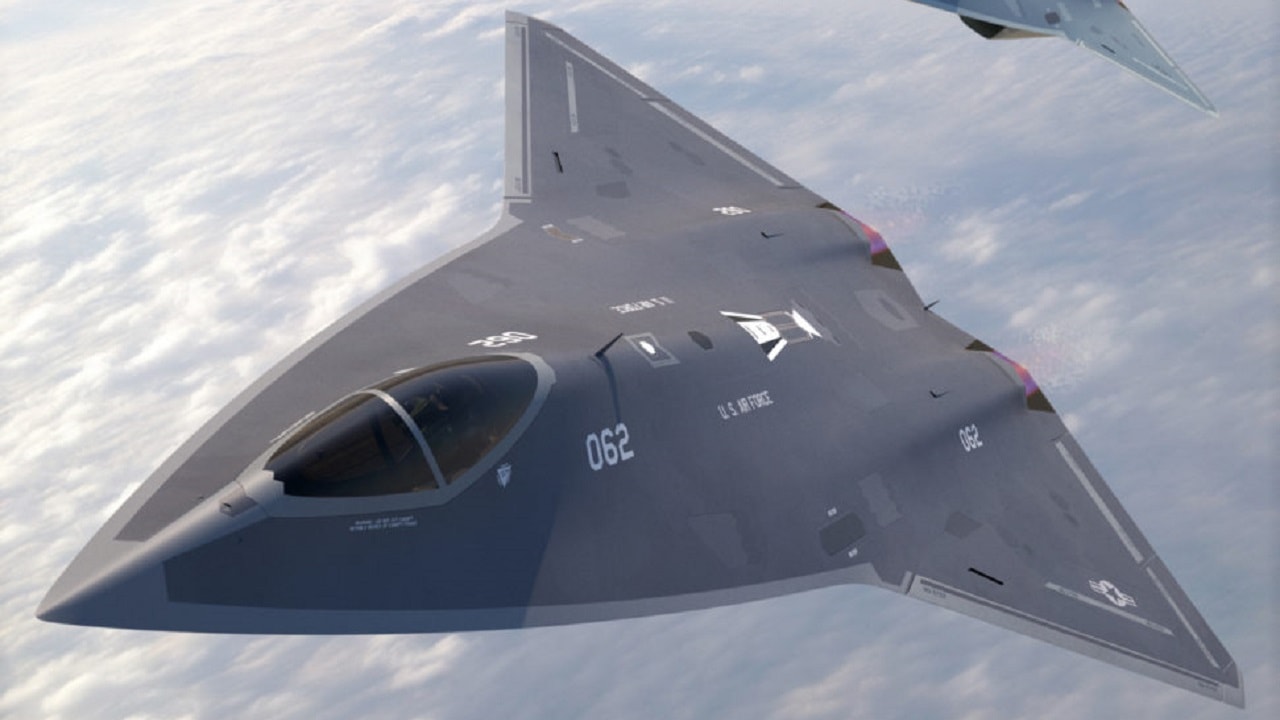F-22 vs. Drones: Who Wins? A common misconception about the United States military is that it always wants “more.” In fact, in recent years, the United States Navy has called to retire many older warships, while the United States Air Force has long fought a battle with lawmakers in Washington over which aircraft must remain in service.
At issue is the cost of maintaining legacy programs, and that can often lead to some calls to retire some programs before lawmakers believe they’ve reached their expected end of life.
According to a report from Breaking Defense, Andrew Hunter, assistant secretary of the Air Force for acquisition, technology and logistics explained during an August 11 roundtable at the service’s Life Cycle Industry Days conference that maintaining the Lockheed Martin F-22 Raptor could impact efforts to develop and field the new drones that are part of the Next Generation Air Dominance (NGAD) program. The sixth-generation aircraft, which is the centerpiece of the NGAD, is meant to replace the F-22.
However, NGAD is also meant to include a multitude of systems, notably an unmanned “collaborative combat aircraft.” To fund the development of the unmanned aerial system (UAS), the Air Force has called for retiring 33 Block 20 F-22 aircraft currently used for pilot training. The service has argued that it could free up as much as $1.8 billion over the next eight years. However, as Congress is expected to block such a move, it could impact the NGAD’s drone research and development (R&D) efforts, Hunter warned.
“The concern I would have would be on our ability to deliver on a collaborative combat aircraft system to complement NGAD,” Hunter said. “That’s where I can start to see impacts, and it would limit our ability to dedicate people and resources to an aggressive effort to field that capability.”
The Air Force has already requested about $52 million in fiscal year 2023 (FY23) to transition its Skyborg technology development effort to the “advanced component development and prototypes” stage. In addition to the money, Hunter further suggested that the service lacks the personnel and even infrastructure to dedicate to new capabilities if the Air Force is not allowed to retire legacy aircraft on time.
“If we were not to get divestments — generally and specific to the F-22 — we wouldn’t be able to migrate the air crews and the maintenance crews that work on those platforms to the next generation capabilities that we’re trying to field,” he continued. “We anticipate transitioning folks from our tactical aircraft community into those newer mission sets, and we’re looking to field on a very rapid timeframe.”

US Air Force image of possible NGAD Concept. Image Credit: US Air Force.
The Air Force’s proposal to cut the F-22s is actually part of a much broader plan that calls for divestment of around 150 aircraft in FY23, which could then free funds for higher priorities such as the B-21 Raider bomber, hypersonic weapons programs, and notably the NGAD.
F-22: Advanced But Expensive
The F-22 is considered one of the most advanced aircraft ever developed, and it has one of the smallest radar signatures of any combat plane in service today. Yet, in part, because the program was considerably scaled back almost two decades ago, the Raptor is actually a great deal more expensive to fly and maintain per aircraft than even the more modern Lockheed Martin F-35 Lightning II.
Sandboxx reported that based on Department of Defense (DoD) figures from 2018, the Air Force’s fleet of F-35As each cost about $28,455 per hour to fly, while the F-22 Raptor rings in at $33,538 per hour. That is a significant number – and it is easy to see why the service wants to retire the warbirds while it looks to future unmanned aircraft that will be cheaper to operate.

F-22 A Raptor Demonstration Team aircraft maintainers prepare to launch out Maj. Paul “Max” Moga, the first F-22A Raptor demonstration team pilot, July 13. (U.S. Air Force photo/Senior Airman Christopher L. Ingersoll)
Originally, the Air Force had planned to purchase upwards of 750 F-22 Raptors, but in 2006, the defense priorities of the United States had shifted away from deterring near-peers and toward the ongoing Global War on Terror (GWoT). As a result, the F-22 was scaled back, and it has been more of a burden than an asset ever since – which is a shame considering its capabilities.
A Senior Editor for 1945, Peter Suciu is a Michigan-based writer who has contributed to more than four dozen magazines, newspapers, and websites with over 3,000 published pieces over a twenty-year career in journalism. He regularly writes about military hardware, firearms history, cybersecurity, and international affairs. Peter is also a Contributing Writer for Forbes. You can follow him on Twitter: @PeterSuciu.

